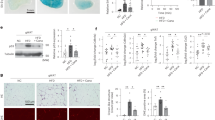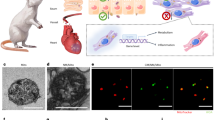Abstract
RATS on a Torula yeast diet deficient in vitamin E and factor 3 show a metabolic disturbance in liver slices, termed respiratory decline, 1–2 weeks prior to succumbing to necrotic liver degeneration1. Dietary supplementation of vitamin E as well as intraportal injection of the vitamin prevents the disturbance, whereas dietary factor 3 (and also selenite) alleviates the decline without, however, preventing it fully. The effects following dietary, intraportal, and in vitro application of a number of antioxidants have been analysed. A tocopherol metabolite2 as well as diphenylphenylenediamine3 are effective, in vitro, in preventing the respiratory failure of liver slices. While mitochondria of the deficient livers show an accelerated diminution of succinate oxidation in the presence of dinitropyridine nucleotide4, homogenates of such livers, in previous work, did not show decline with glucose as substrate and optimal supplements of adenosine triphosphate and dinitropyridine nucleotide1. In this communication, a different homogenate system is described which shows respiratory decline with α-ketoglutarate or succinate as substrates. The preventive effects, in vitro, of tocopherol, the tocopherol metabolite (kindly supplied by Dr. Eric J. Simon of New York University College), menadione and diphenylphenylenediamine are demonstrated.
This is a preview of subscription content, access via your institution
Access options
Subscribe to this journal
Receive 51 print issues and online access
$199.00 per year
only $3.90 per issue
Buy this article
- Purchase on Springer Link
- Instant access to full article PDF
Prices may be subject to local taxes which are calculated during checkout
Similar content being viewed by others
References
Chernick, S. S., Moe, J. G., Rodnan, G. P., and Schwarz, K., J. Biol. Chem., 217, 829 (1955).
Mertz, W., and Schwarz, K., Proc. Soc. Exp. Biol. Med., 102, 561 (1959).
Schwarz, K., Mertz, W., and Simon, E. J., Biochim. Biophys. Acta, 32, 484 (1959).
Corwin, L. M., and Schwarz, K., J. Biol. Chem., 234, 191 (1959).
Schwarz, K., Proc. Soc. Exp. Biol. Med., 78, 852 (1951).
Mertz, W., and Schwarz, K., Amer. J. Physiol., 196, 614 (1959).
Simon, E. J., Eisengart, A., Sundheim, L., and Milhorat, A. T., J. Biol. Chem., 221, 807 (1956).
Carpenter, M. P., Kitabchi, A. E., McCay, P. B., and Caputto, R., J. Biol. Chem., 234, 2814 (1959).
Donaldson, K. O., Nason, A., and Garrett, R. H., J. Biol. Chem., 233, 572 (1958).
Pardee, A. B., and Potter, V. R., J. Biol. Chem., 176, 1085 (1948).
Author information
Authors and Affiliations
Rights and permissions
About this article
Cite this article
CORWIN, L., SCHWARZ, K. Maintenance of α-Ketoglutarate and Succinate Oxidation in E-Deficient Liver Homogenates by α-Tocopherol, a Tocopherol Metabolite, Menadione and Diphenylphenylenediamine. Nature 186, 1048–1049 (1960). https://doi.org/10.1038/1861048a0
Issue Date:
DOI: https://doi.org/10.1038/1861048a0
This article is cited by
Comments
By submitting a comment you agree to abide by our Terms and Community Guidelines. If you find something abusive or that does not comply with our terms or guidelines please flag it as inappropriate.



